The type of capacitor that we generally use on a drone is generally quite big and bulky, by comparison to the rest of the electronics.
If you have built a smaller quad, such as a 3 inch, or if you have worked on a frame that is tight for space, a capacitor can be a pain!
Where do you put it? Do you even need one?
In this article you will learn why it is advised to use a capacitor, what purpose the capacitor serves and how to install one.
Table of Contents
- What is a Capacitor?
- Why Do I Need a Capacitor on my FPV Drone?
- How Do I Install a Capacitor on my FPV Drone?
- Conclusion
What is a Capacitor?
A capacitor is one of the fundamental passive electronic components.
The primary purpose of a capacitor is to store electrical charge, which can have many applications in electronics design.
Passive devices or components do not generate energy, but can store it or dissipate it
– electronics-tutorials.ws
There are many capacitors found in almost all electronic devices, including every electronic part that we use in our FPV drones.
Capacitors come in all different shapes and sizes, but in general the larger the capacitor, the more charge it can store.
One of the most common uses of a capacitor is for smoothing out the supply voltage.
When a capacitor is used in this way, it is called a decoupling capacitor.
Why Do I Need a Capacitor on my FPV Drone?
It is recommended to use a capacitor on an FPV drone in order to smooth the main power supply.
The motors on an FPV drone are very demanding on the power supply circuit and can cause the battery voltage to sag.
When you pump the throttle, the motors will draw a huge amount of current momentarily in order to get up to the required RPM.
This causes fluctuations in the battery voltage. These fluctuations can affect sensitive parts of the electronics such as the video transmitter.
In a worse case scenario you could experience a brownout.
In this event the supply voltage would drop below the minimum voltage required to power the voltage regulators on the flight controller.
This would cause the flight controller to reboot mid-air!
So how can a capacitor prevent these problems?
When a capacitor is added to the main power supply of your FPV drone, it acts as a reservoir.
During moments where the power supply demands are lower, the capacitor charges.
Then during moments where the power demands surge, the capacitor effectively fills in the gap.
I have created an example using the Falstad circuit simulator, in order to better explain the principle.
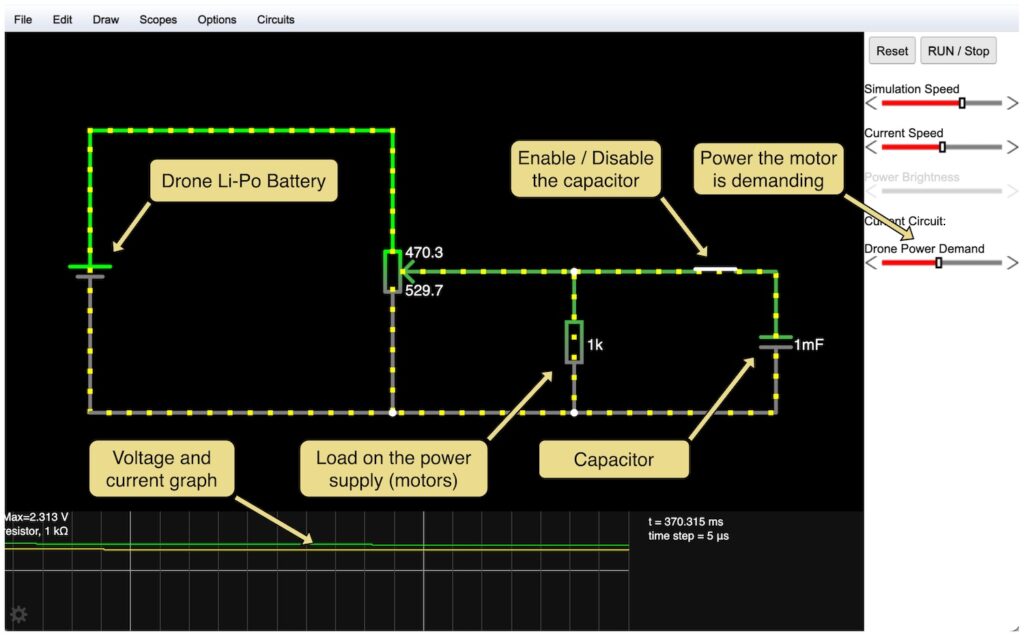
You can try this out for yourself, just follow this link to open the simulation in a new window.
With the circuit running, try moving the drone power demand slider as it if were your throttle stick…
Use the switch to enable and disable the capacitor, in order to see how the drone performs with and without a capacitor.
When the switch is open and the capacitor is disconnected, you will see that the voltage (green line on the graph) changes as you slide the drone power demand slider back and forth.
When you connect the capacitor by closing the switch, you should notice that the voltage stays more or less consistent, despite the changes in power supply demand.
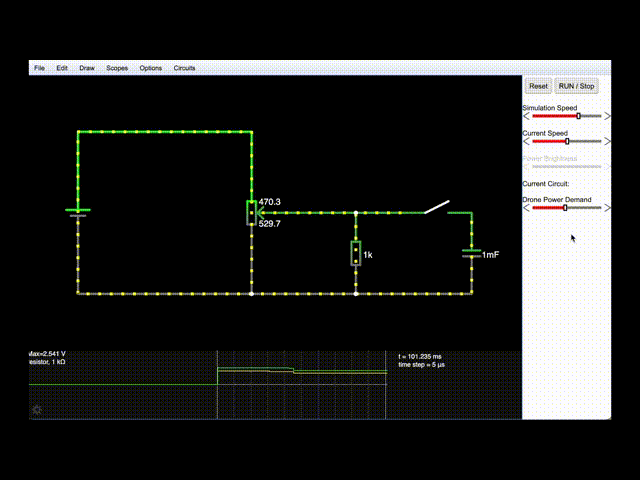
The effect demonstrated in this example is very similar to what actually happens when you install a capacitor on your FPV drone.
Installing a capacitor on your FPV drone can help in a number of ways;
- Potential reduction in noise on your video signal.
- Reduces the risk of brownout.
- Reduction in gyro noise, leading to better flight performance.
- Other signals such as the RC link are less likely to get disrupted.
With all of that said and from my own personal point of view as a qualified electronic engineer, I would certainly recommend adding a capacitor to an FPV drone.
The weight increase is small, almost negligible, especially on a 5 inch size quad or larger.
The cost of a capacitor is also very small, even from hobby stores. You can get them for a couple of bucks from Amazon.
How Do I Install a Capacitor on my FPV Drone?
So now that we have decided it is absolutely worth adding a capacitor to our build, which one do we choose and how do we install it?
The best way to install a capacitor on an FPV drone is simply by soldering it directly to the battery terminals on the ESC (or AIO flight controller).
What Is The Best Place to Install a Capacitor on my FPV Drone?
Decoupling capacitors perform best when they are located as close as possible to the load.
This means you should solder your capacitor as close to the ESC as possible, as this is what sources the power for the motors.
In most modern builds, the ESC will be a single board that serves all four motors, situated in the flight stack.
If you only have one board then you probably have an all-in-one (AIO). In this case the ESCs and flight controller are blended into a single board.
In both cases the battery terminals will be on the same board as the ESCs.
You should simply solder your capacitor as close to the battery terminals as is possible.
Many ESCs also have pads specifically for adding a capacitor.
It is perfectly fine to use these pads instead if you prefer, as they are often situated very close to the battery terminals.
If you are using separate ESCs for each motor, you should add a capacitor on the power terminals of each of the individual ESCs.
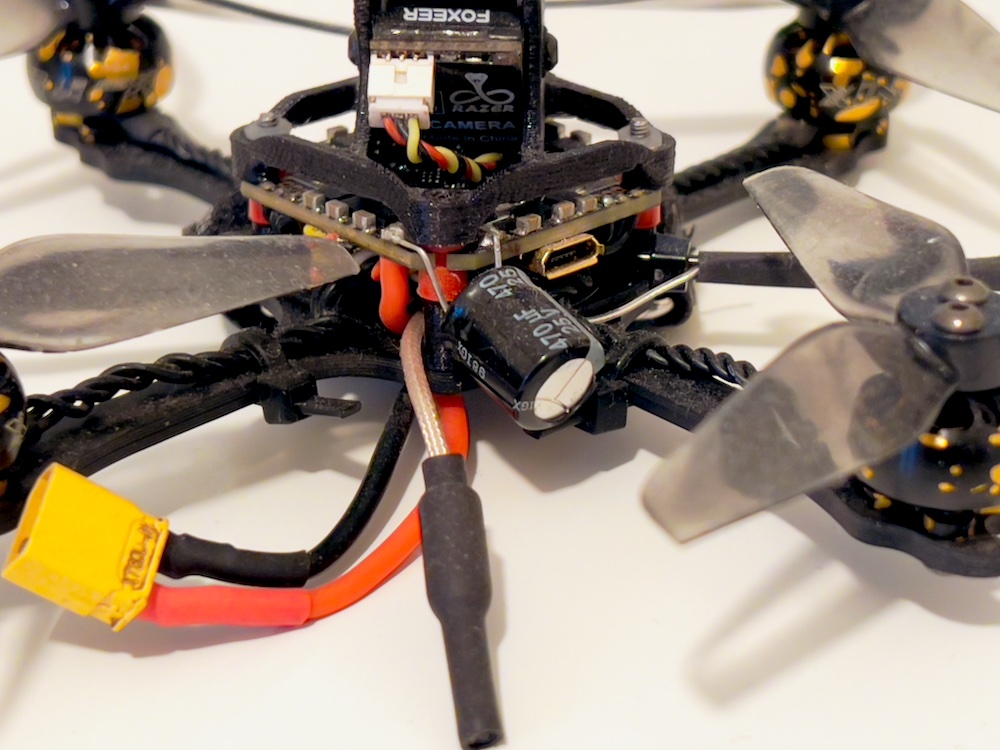
What Can I Do if a Capacitor Will Not Fit On My FPV Drone?
Some frames can be quite cramped and you need to think more carefully about your build.
This includes the placement of your capacitor.
When you build a quad lacking in space, the capacitor suddenly becomes huge!
It is not always possible to squeeze the capacitor in and connect it directly to the battery pads. So what do we do in this case?
Although the optimal solution is to mount the capacitor on the battery terminals, it is also ok to extend the capacitor leads in order to mount the capacitor in a more convenient location if necessary.
If you do extend the capacitor leads, it is advisable to keep the extension as short as possible.
You should also opt for thicker wire in order to minimise the increase of resistance.
Personally, I use 18 AWG silicon copper wire to extend the capacitor leads.
Currently my daily 5 inch is a Hyperlow Vert V2 with a slammed deck design. It looks beautiful but internal space is very tight!
I ended up squeezing the capacitor in at the front, out of harm’s way, using a short lead extension.
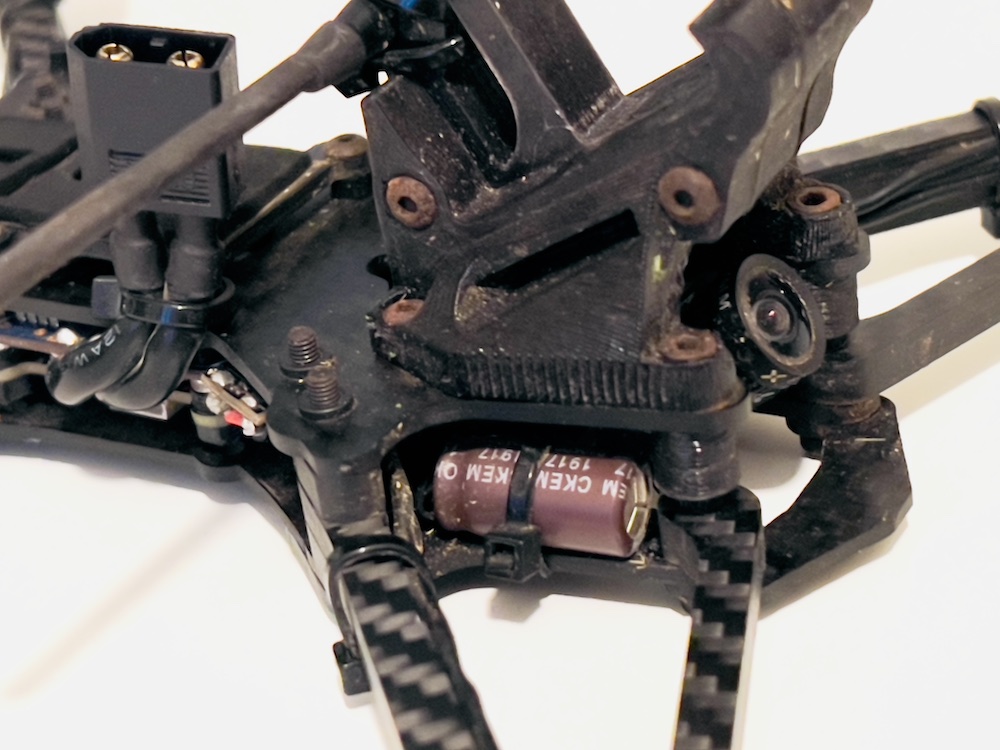
What Type of Capacitor do I Need For an FPV Drone?
The type of capacitor that you add to your drone can depend on the size of the drone and the batteries that you are using.
You can use the following points for guidance;
- The capacitor should be an electrolytic capacitor. Note that these capacitors are polarized and should be installed with the correct polarity.
- The capacitance value should be at least 470uF, but 1000uF is more ideal. Within reason you cannot add too much capacitance.
- For single ESCs per motor, you can add 250uF on each ESC.
- Ensure that the capacitor voltage rating is well clear of the battery voltage.
Let’s take a closer look at those points…
Electrolytic Capacitors
A capacitor usually consists of two plates that are separated by a dielectric (non-conductive) material.
In the case of an electrolytic capacitor, an electrolyte is added to greatly increase the capacitance.
Technically you don’t absolutely have to use an electrolytic capacitor.
But you probably won’t find a capacitor small enough, with a large enough value and large enough maximum voltage, that is not electrolytic.
There is no inherent disadvantages to using an electrolytic capacitor, just a few considerations;
- Unlike a traditional capacitor, electrolytic capacitors are polarized. You must take care that you are connecting the positive and negative terminals correctly.
- The electrolyte in electrolytic capacitors will eventually dry up, making their life shorter than traditional capacitors. However this does not usually occur for several decades so it is not likely to be a problem for an FPV drone enthusiast!
It is beyond the scope of this article to delve too deeply into the explanation of capacitors, but if you want a better understanding, there are plenty of articles available that explain how capacitors work.
Capacitance Value
Each capacitor has a value of capacitance, given in Farads.
The value quite simply describes how much charge the capacitor will store.
One Farad is a fairly huge amount of charge.
Therefore it is far more common to measure capacitors in milifarads, microfarads or even smaller!
The symbol given for farads is F, therefore you can denote milifarads as mF and microfarads as uF.
1 F = 1000 mF = 1000,000 uF
It is possible to calculate the optimal value of capacitance to use in a give application.
However it is usually not necessary for choosing a decoupling capacitor.
We just need to choose a capacitance value that probably a bit more than what we need.
Having a little too much capacitance has no negative effects, excluding a very minor weight gain or extra cost.
So what value of capacitance should we choose for our FPV drone?
Personally, I would recommend the following:
- For 3 inch sized drones and under: use a 220uF to 470uF, as large as your build will allow.
- For 5 inch and 6 inch builds: use a 1000uF on 4-in-1 ESCs or 220uF to 270uF on individual ESCs.
- For 7 inch builds: use a 1000uF capacitor, or 2 x 1000uF for larger (28XX or more) motors and/or where space is available.
Capacitance Voltage
As well as the actual value of charge that a capacitor can store, we also need to consider the maximum voltage that is can withstand.
Both capacitance and maximum voltage affect the physical size of of the capacitor.
Capacitors that can withstand a higher voltage are usually larger in size.
Therefore we must choose a capacitor with an adequate maximum voltage rating, but without going too extreme so as to end up with an unnecessarily large capacitor.
The maximum voltage that you should choose is directly related to your battery voltage.
However we should also consider that the voltage can spike when the inertia of the motors causes them to continue to spin and generate back EMF.
This means that we should size our capacitors not only to accommodate the battery voltage, but also any spikes that might occur.
It would be wise to choose a capacitor with a maximum voltage of somewhere close to double the maximum battery voltage.
Some ESC designs do however incorporate a ‘spike absorber,’ and it is also possible to add one externally.
A spike absorber consists of some powerful diodes that prevent the voltage crossing a certain point, thus ‘absorbing the voltage spikes.’
Having a spike absorber means you only need to size your capacitor slightly above the threshold of the spike absorber.
However I would still recommend allowing ample headroom and choosing a capacitor with a considerably higher maximum allowable voltage.
Electrolytic capacitors can explode quite extravagantly if pushed over-voltage!
The following table gives recommendations for maximum capacitor voltages, for various LiPo battery sizes:
| Number of Cells | Maximum Battery Voltage | Capacitor Voltage Rating |
|---|---|---|
| 1S | 4.2V | 10V |
| 2S | 8.4V | 16V |
| 3S | 12.6 | 25V |
| 4S | 16.8 | 35V |
| 5S | 21 | 35V |
| 6S | 25.2 | 50V |
Low ESR Capacitors
The final parameter that we need to consider when choosing a capacitor for a drone is the ESR value.
ESR is an abbreviation of equivalent series resistance.
ESR is the amount of internal resistance within a component. It basically describes how much energy is wasted within the component.
In terms of our decoupling application, higher ESR can impede the capacitors ability to smooth the power supply.
In short, we want a capacitor with with the lowest ESR value possible.
Conclusion
If you came this far, congratulations! Thanks for reading this article.
We have covered all of the details required in order to better understand which capacitor we need for our FPV drone.
You should now be confident to choose the optimal capacitor for your build and know the best place to install it.

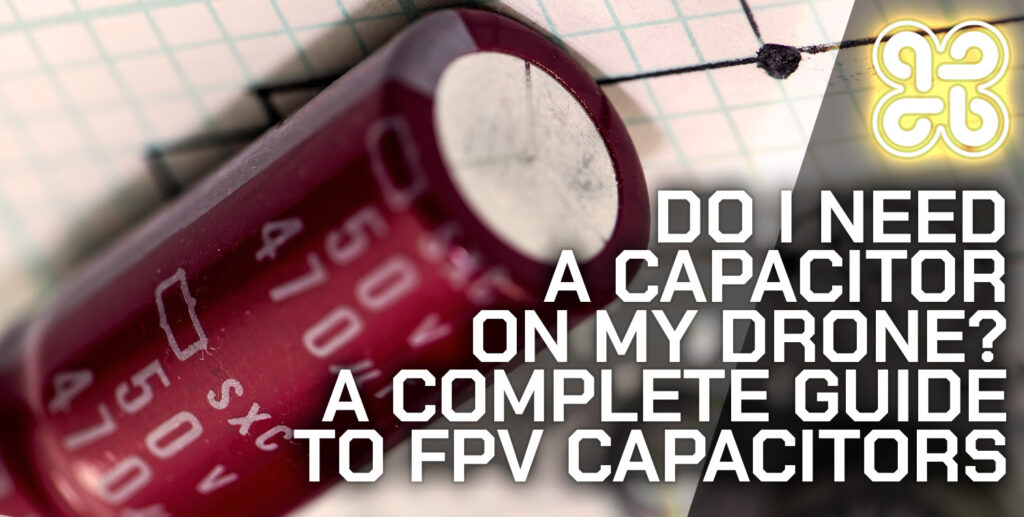
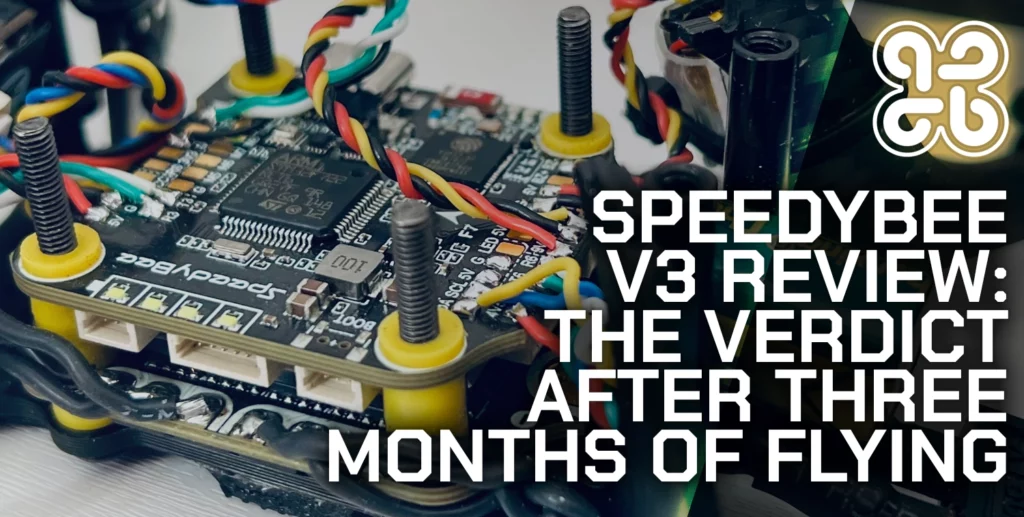
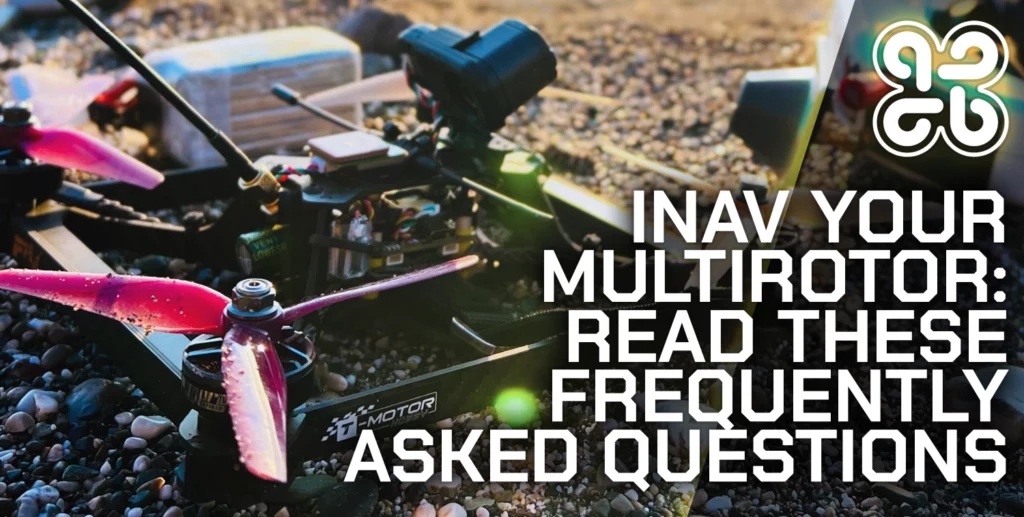
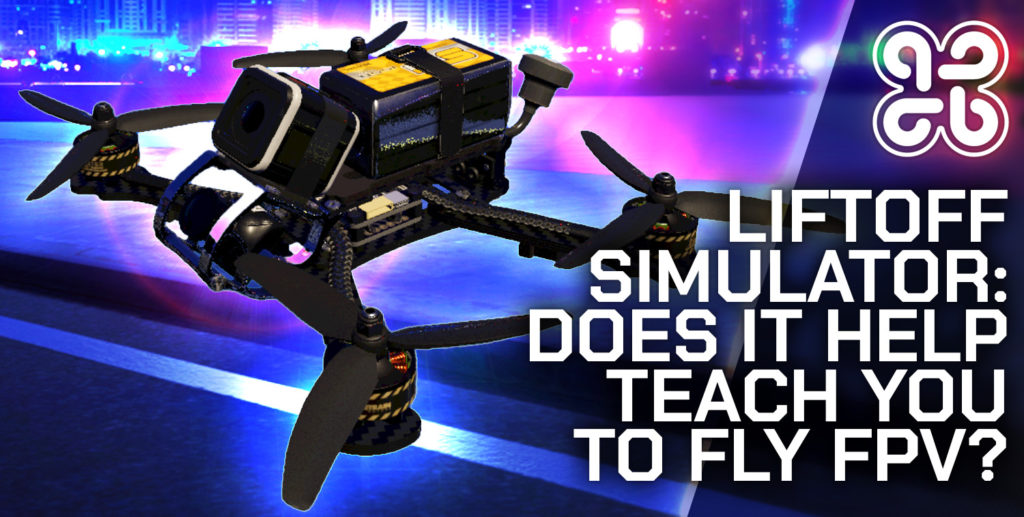
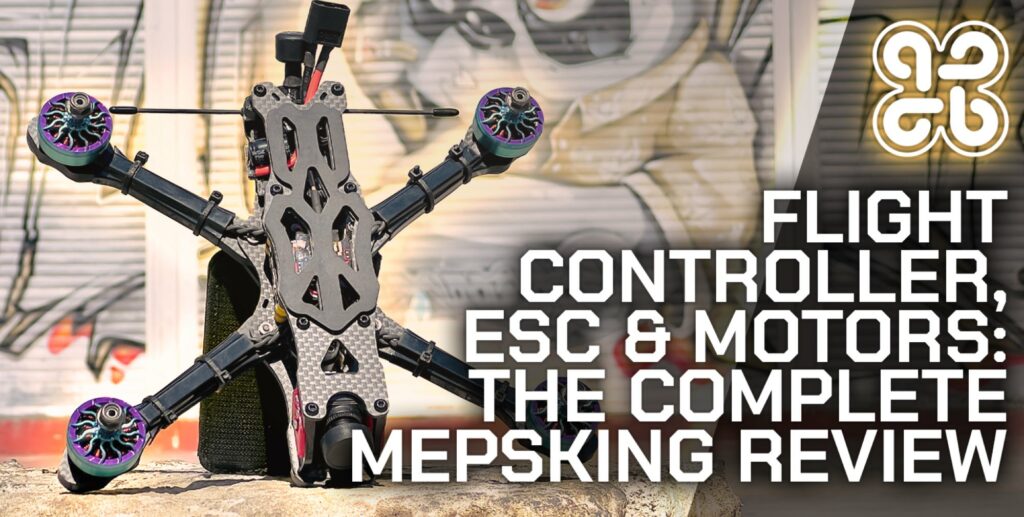
Cheers